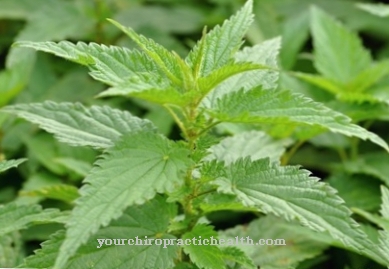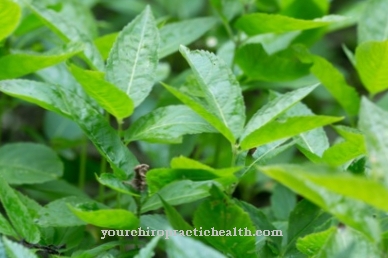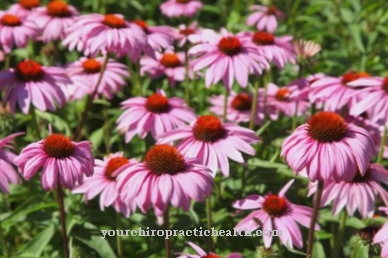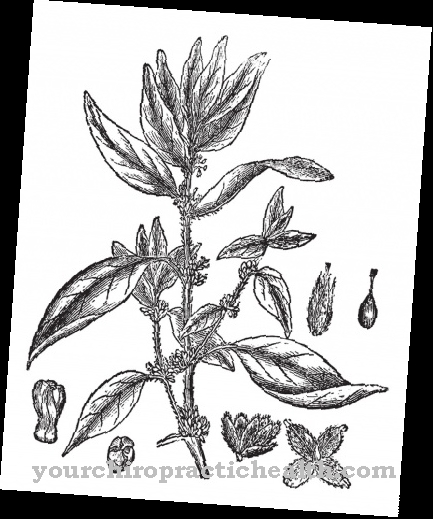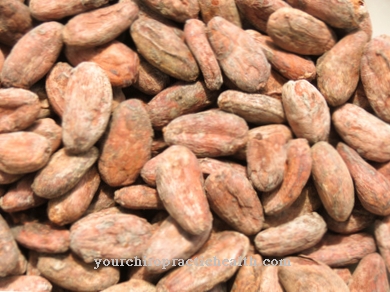The Evening primrose or Common evening primrose originally from North America and was introduced to Europe in the 17th century. At first it was only considered an ornamental plant, later its healing powers were discovered, especially with regard to skin care and skin diseases.
Occurrence & cultivation of the evening primrose

The beautiful Evening primrose, which belongs to the evening primrose family, is a biennial plant, becomes about 1 m high and flowers from June to October. Various branches with bright yellow flowers arranged in a wreath branch off a reddish colored stem. The leaves are egg-shaped, with the tips towards the stem, and are larger in the lower part of the plant than in the upper part. The fruits of the evening primrose are oblong and square, about 3 cm long with many round seeds inside.
The evening primrose grows where one would not expect such a beautiful plant, on sandy surfaces, heaps of rubble, on embankments, in quarries and on dry lawns. You can tell from its name that it is special: it only begins to bloom in the late afternoon and its bright yellow flowers only unfold in the twilight and darkness. The next morning, when the sun shines again, the flowers wither.
Effect & application
In earlier times the evening primrose was mainly used as a vegetable. The fleshy, reddish root was boiled in broth or prepared with vinegar and oil. Its healing properties were not yet known, but it was known that they would get sick people back on their feet faster.
It was not discovered until 1919 that the seeds of the evening primrose contain a high proportion of gamma-linolenic acid (ten percent), which plays an important role in prostaglandin formation. Prostaglandins ensure the suppleness of the skin in the body, control the female sex hormones, expand blood vessels and are required for the development of the muscles.
A deficiency in polyunsaturated fatty acids can be recognized by dry, flaky skin, dry, flaky hair and brittle fingernails. Evening primrose oil is particularly suitable for compensating for a deficiency in polyunsaturated fatty acids and also has a positive effect on signs of aging and general weakness of the body. The supply of gamma-linoleic acid makes the metabolism more active and improves well-being.
Evening primrose oil can be used internally, for example in the form of capsules, or externally. It is used externally mainly because it keeps the skin supple and regulates the moisture balance of the skin, which is particularly important in the treatment of inflammatory skin diseases such as neurodermatitis. The evening primrose oil helps against itching, skin redness and flaking and ensures a harmonious balance of the skin. Even mature skin reacts positively to the use of evening primrose oil, because it ensures that the skin remains elastic and does not dry out.
Internally, it is used particularly in naturopathy for the treatment of neurodermatitis, psoriasis, dry and itchy skin. Other areas of application are polyarthritis, ankylosing spondylitis, increased cholesterol levels, pollen allergy and premenstrual syndrome (PMS). During menopause, evening primrose oil can help improve hormonal balance. It is available as a pure, high quality oil, in the form of capsules, creams, ointments and body lotions.
Importance for health, treatment & prevention
Due to the special type of composition, evening primrose oil is important for the body's functions and inflammation. In order to maintain health, the body relies on essential fatty acids such as linoleic acid, which it cannot produce itself and which must be taken in through food.
Evening primrose oil contains gamma-linolenic acid and the body can use an enzyme to produce prostaglandin from gamma-linolenic acid. If prostaglandin production is disturbed, the immune system can no longer provide adequate protection against inflammation. The evening primrose oil has a regulating effect.
As with other remedies, side effects can occur, albeit rarely. When used internally, digestive problems, abdominal pain and diarrhea can occur. Pregnant women, nursing mothers and epileptics should only use preparations with evening primrose oil after consulting a doctor.
When used externally in the form of ointments and creams, it should be noted that the skin should be protected from direct sunlight. It is better to apply creams and ointments in the evening. Evening primrose oil is also important in veterinary medicine, both internally and externally.
If you buy high-quality evening primrose oil, you should make sure that the opened bottle is always tightly closed and that it must be stored in a cool, dry and dark place. If it comes into contact with oxygen, it can quickly go rancid. Unopened, the oil can be kept for about 1 year; when the bottle is opened, about 3 months. Because high-dose intake is recommended over a longer period of time, it makes more sense to take it in the form of capsules.
Evening primrose oil is not only used in medicine, but also in skin care products and soothes dry skin, has an effect on wrinkles and cares for the skin after showering or bathing. Evening primrose oil is simply versatile.

